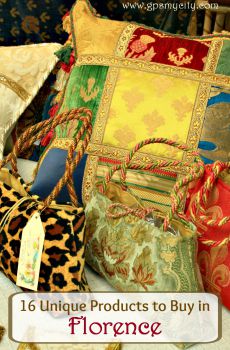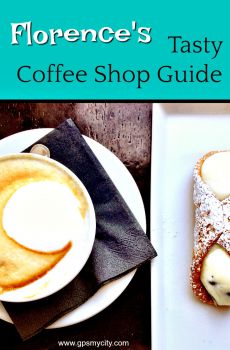Chiostro dello Scalzo (Cloister of the Scalzo), Florence
The Scalzo Cloister served as the entrance to the cloister of the Confraternity of Saint John the Baptist. The Confraternity, established in 1376, earned the nickname "dello Scalzo" because its members, who carried crosses in processions, walked barefoot. In 1785, Pietro Leopoldo of Lorraine disbanded the Brotherhood and sold off their property, except for the cloister itself, which housed sixteen chiaroscuro frescoes depicting episodes from the life of Saint John the Baptist. These frescoes were primarily painted by Andrea Del Sarto (1486-1530), a prominent artist of his time and a member of the Scalzo. He was highly regarded during his lifetime and known for his exceptional skills in fresco decoration, altarpiece painting, portraiture, drawing, and use of color. However, his fame diminished after his death, overshadowed by contemporaries like Leonardo da Vinci, Michelangelo, and Raphael.
Created between 1514-24, these frescoes are a remarkable display of stylistic and technical perfection by a master artist who played a significant role in the artistic scene of Florence at the beginning of the 16th century. Del Sarto's influence is now also recognized as crucial to the development of Mannerism.
The frescoes consist of twelve scenes that form a narrative, beginning to the right of the entrance. The sequence starts with the Annunciation to Zachary (1523), followed by The Visitation (1524), The Birth of the Baptist (1526), The Blessing of the Young Saint John (1519), Meeting of Jesus and the Young Saint John the Baptist in the Desert (1518), The Baptism of Christ (circa 1509-1510), The Baptist Preaching to the Crowds (1515), The Baptism of the Crowds (1517), Saint John's Capture (1517), The Dance of Salome (1522), The Beheading of Saint John the Baptist (1523), and The Presentation of the Head of Saint John the Baptist (1523). It's important to note that the dates of the scenes do not follow the narrative sequence.
Additionally, the cycle includes four figures represented as trompe-l'oeil niches, giving the illusion of sculptures. These figures symbolize Christian virtues: Faith (circa 1523) and Hope (1523) flank the entrance, displaying the Latin inscription "Laudate Dominum in trio sancto eius" ("Praise the Lord in His holy place"). Charity (circa 1513) and Justice (1515) stand on either side of the former passageway into the chapel, featuring another Latin phrase, "Introbibo in Domum Tuam" ("I shall enter your household").
Created between 1514-24, these frescoes are a remarkable display of stylistic and technical perfection by a master artist who played a significant role in the artistic scene of Florence at the beginning of the 16th century. Del Sarto's influence is now also recognized as crucial to the development of Mannerism.
The frescoes consist of twelve scenes that form a narrative, beginning to the right of the entrance. The sequence starts with the Annunciation to Zachary (1523), followed by The Visitation (1524), The Birth of the Baptist (1526), The Blessing of the Young Saint John (1519), Meeting of Jesus and the Young Saint John the Baptist in the Desert (1518), The Baptism of Christ (circa 1509-1510), The Baptist Preaching to the Crowds (1515), The Baptism of the Crowds (1517), Saint John's Capture (1517), The Dance of Salome (1522), The Beheading of Saint John the Baptist (1523), and The Presentation of the Head of Saint John the Baptist (1523). It's important to note that the dates of the scenes do not follow the narrative sequence.
Additionally, the cycle includes four figures represented as trompe-l'oeil niches, giving the illusion of sculptures. These figures symbolize Christian virtues: Faith (circa 1523) and Hope (1523) flank the entrance, displaying the Latin inscription "Laudate Dominum in trio sancto eius" ("Praise the Lord in His holy place"). Charity (circa 1513) and Justice (1515) stand on either side of the former passageway into the chapel, featuring another Latin phrase, "Introbibo in Domum Tuam" ("I shall enter your household").
Want to visit this sight? Check out these Self-Guided Walking Tours in Florence. Alternatively, you can download the mobile app "GPSmyCity: Walks in 1K+ Cities" from Apple App Store or Google Play Store. The app turns your mobile device to a personal tour guide and it works offline, so no data plan is needed when traveling abroad.
Chiostro dello Scalzo (Cloister of the Scalzo) on Map
Sight Name: Chiostro dello Scalzo (Cloister of the Scalzo)
Sight Location: Florence, Italy (See walking tours in Florence)
Sight Type: Religious
Guide(s) Containing This Sight:
Sight Location: Florence, Italy (See walking tours in Florence)
Sight Type: Religious
Guide(s) Containing This Sight:
Walking Tours in Florence, Italy
Create Your Own Walk in Florence
Creating your own self-guided walk in Florence is easy and fun. Choose the city attractions that you want to see and a walk route map will be created just for you. You can even set your hotel as the start point of the walk.
Michelangelo's Masterpieces Walking Tour
Though born in the small Tuscan town of Caprese, Michelangelo spent over two decades of his life in Florence-the heart of the Renaissance. It was here that he grew up, was educated, and began shaping his artistic voice, eventually creating some of the most iconic masterpieces the city has ever known.
His larger-than-life work-“David”-didn’t just reshape the image of biblical heroism-it... view more
Tour Duration: 2 Hour(s)
Travel Distance: 4.0 Km or 2.5 Miles
His larger-than-life work-“David”-didn’t just reshape the image of biblical heroism-it... view more
Tour Duration: 2 Hour(s)
Travel Distance: 4.0 Km or 2.5 Miles
Florence's Hidden Art Treasures
The “Cradle of the Renaissance,” Florence is one of Europe’s most beautiful and busiest destinations, home to some of the world's greatest pieces of art and architecture. The iconic masters like Giotto, Botticelli, Raphael and Michelangelo, as well as their somewhat less-known but equally talented counterparts, such as Ghirlandaio, Sangallo and Castagno, have blessed this city with... view more
Tour Duration: 2 Hour(s)
Travel Distance: 3.2 Km or 2 Miles
Tour Duration: 2 Hour(s)
Travel Distance: 3.2 Km or 2 Miles
Medici Landmarks Walking Tour
The Medici family helped to establish Florence as the single most important art capital of Renaissance Europe. In order to prove wealth and power, they built numerous palaces, libraries, churches, chapels and personal residences. The Medicis were big lovers of art and they acquired huge, expensive collections, as well as supporting many sculptors and painters of the time.
Designed by... view more
Tour Duration: 1 Hour(s)
Travel Distance: 2.7 Km or 1.7 Miles
Designed by... view more
Tour Duration: 1 Hour(s)
Travel Distance: 2.7 Km or 1.7 Miles
Arno South Bank Walking Tour
The area south of the Arno River-known as Oltrarno, or “Beyond the Arno”-offers a quieter, more intimate side of Florence, but one that’s no less captivating. It’s here that you’ll find the grand Pitti Palace, home to a painting collection rivaled only by the Uffizi Gallery, and the expansive Boboli Gardens, once the private domain of the Medici and later, the royal family. As one of the... view more
Tour Duration: 2 Hour(s)
Travel Distance: 2.4 Km or 1.5 Miles
Tour Duration: 2 Hour(s)
Travel Distance: 2.4 Km or 1.5 Miles
Florence Introduction Walking Tour
Florence was founded in 59 BC by Julius Caesar as a settlement for his veteran soldiers. Laid out like a Roman military camp, its main roads intersected at what is now the Republic Square. Originally named Fluentia, referencing its location between two rivers, the city later adopted the name Florentia, meaning “flowering” or “flourishing”.
And flourish it did. During the Middle Ages and... view more
Tour Duration: 2 Hour(s)
Travel Distance: 4.1 Km or 2.5 Miles
And flourish it did. During the Middle Ages and... view more
Tour Duration: 2 Hour(s)
Travel Distance: 4.1 Km or 2.5 Miles
Dante's Florence Walking Tour
Dante Alighieri was arguably the greatest – albeit also most controversial – of Italy's poets. After having served as one of the six priors governing Florence, his political activities – including the banishing of several rivals – led to his own banishment, upon which he wrote his masterpiece, “The Divine Comedy”, as a wanderer, seeking protection for his family in one town after... view more
Tour Duration: 1 Hour(s)
Travel Distance: 2.1 Km or 1.3 Miles
Tour Duration: 1 Hour(s)
Travel Distance: 2.1 Km or 1.3 Miles
Useful Travel Guides for Planning Your Trip
Souvenir Shopping Guide: 15 Unique Products to Buy in Florence
Compared to other Italian "grands" like Rome, Venice, or Milan, Florence is relatively less-known to an outsider for any local products, save, perhaps, Florentine mosaics and Fiorentina FC. Fortunately, there are tonnes of locally-originated things that this Italian city is rightfully...
Florence's Tasty Coffee Shop Guide
The caffe scene throughout Italy is an important factor of everyday life. People will pop in to their favorite bar on their way to work for a quick espresso breakfast with a pastry, they’ll grab a slice of pizza for lunch or drop by for an aperitivo before dining out and take a peaceful digestivo...
Top 13 Pubs in Florence
Florence, the city of art and beauty has no problem in mastering the art of the nightlife as well. Local pubs are very popular and appreciated among the Florentines and the tourists. Locals and native English speakers that study or live in the city cannot wait to welcome tourists in their cozy...












